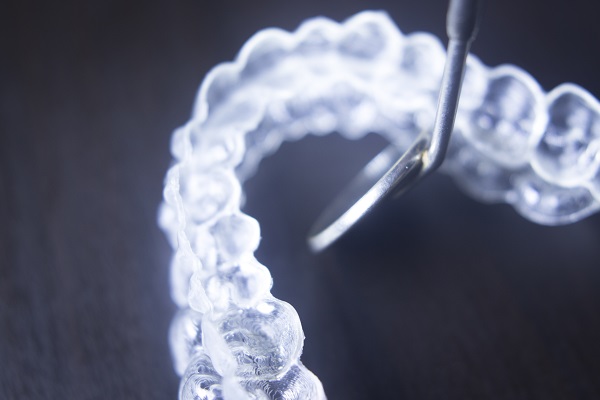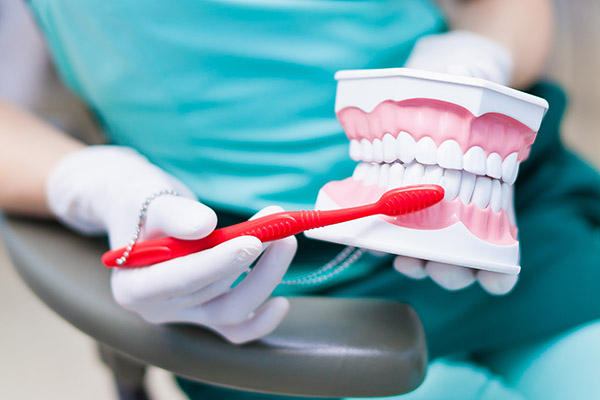A Step By Step Guide To The Invisalign Process

Invisalign® is a great way to fix minor to moderate alignment issues of the teeth and jaw. While many understand the benefits treatment can offer, all too many do not follow through as they fear the process will be too long, expensive or they may not make an ideal candidate. By learning more, patients can make better decisions about treatment.
How the Invisalign® process works
Every patient has a unique experience when it comes to teeth straightening with Invisalign®. However, there are some similarities and certain steps that patients can expect during the treatment process. The following is a complete overview of the steps taken during Invisalign®.
The initial consultation
The first step in treatment is to arrange a consultation visit with a dental professional who offers Invisalign®. During the first visit, the general dentist and patient can discuss treatment goals. After an oral examination, dental X-rays and a discussion of all available options, the patient can make an informed decision about treatment. Invisalign® is a good option for most who have a mild to moderate misalignment, especially teenagers and adults who may desire a discreet treatment process. However, they are not intended to correct severe malocclusions.
Wearing the aligners
Either at the consultation visit or during a follow-up visit, the dentist will take an impression of the patient’s teeth, which is used to create the first set of aligners. Once the first set of Invisalign® aligners are ready, the patient can begin treatment. Patients are required to wear the aligners between 20 and 22 hours each day. They will also receive a new aligner every week or two as teeth shift into the ideal position. Treatment times vary based on the severity of the misalignment and how often the patient wears the aligners daily. Treatments can range from six months to two years.
Good oral hygiene
Throughout the treatment process, the patient will be required to go into the dentist’s office for checkups. There are multiple purposes for checkup visits. It allows the dentist to ensure progress is being made and they can also ensure the patient is keeping good oral health. Teeth are often more vulnerable to cavities during treatment if food and bacteria get trapped between the Invisalign® aligners and teeth, which is why extra good oral hygiene is necessary.
Retainer wear
After treatment is complete and the patient is happy with the alignment of their teeth, the process is not over. Teeth are vulnerable to moving back into the position they were before treatment began. To prevent this from happening a retainer is required. Patients generally need to wear the retainer for the majority of the day for several weeks or months. Afterward, they may only need to wear the retainer at night.
Talk to a dentist about Invisalign®
Our team offers Invisalign® for patients who are not happy with the appearance of their smile due to an alignment concern. To learn more, get in touch via phone or email today.
Request an appointment here: https://www.alluredentalchicago.com or call Allure Dental at (312) 248-7517 for an appointment in our Chicago office.
Check out what others are saying about our services on Yelp: Read our Yelp reviews.
Recent Posts
Invisalign® might be what you need if you are tired of always feeling self-conscious about your misaligned teeth but do not want to deal with metal braces. You are not alone; many people put off getting teeth straightening treatments to avoid the stares wearing braces can bring.Fortunately, Invisalign was invented a couple of decades ago…
Invisalign® is a new alignment procedure in the field of orthodontics. Compared to braces used since the 1800s, Invisalign has a lot of advantages. Its late development includes the use of later and more advanced technologies. Here is a quick discussion about Invisalign orthodontic treatments.The process of teeth alignment is more than an appearance issue.…
As an alternative to traditional braces for straightening teeth, Invisalign® has been available for several decades. During that time, it has become very popular because of the advantages it has over traditional braces. Nevertheless, not everyone is a candidate for clear aligners, and braces have some advantages that make them the better treatment option for…
If you have dreamed of a straighter smile, you may have heard about Invisalign® as an alternative to braces. Traditional braces have been the go-to treatment option for general dentists for many years. However, many patients worry about the regular adjustments, eating restrictions, and discomfort of metal braces.Compared to traditional braces, Invisalign clear aligners are…


